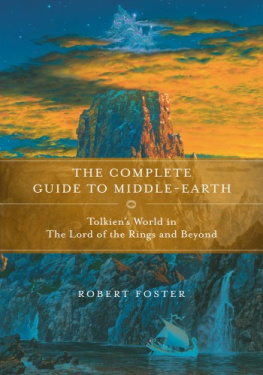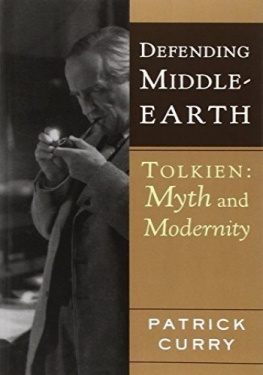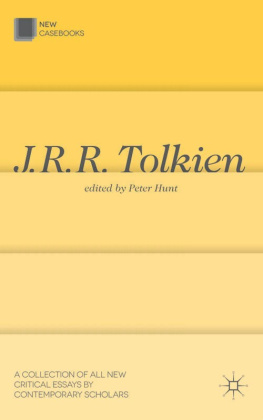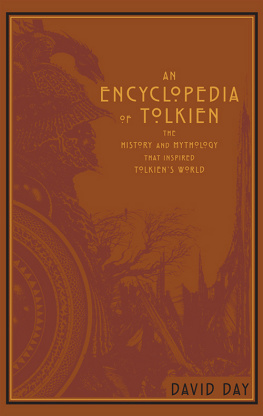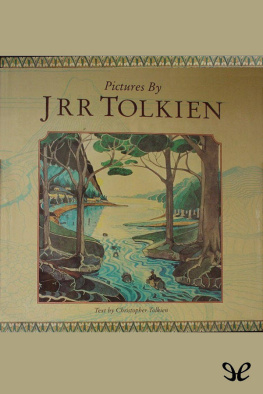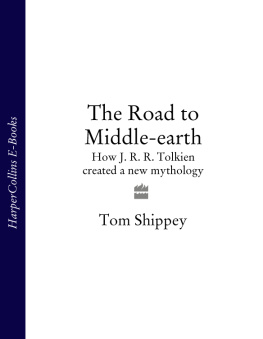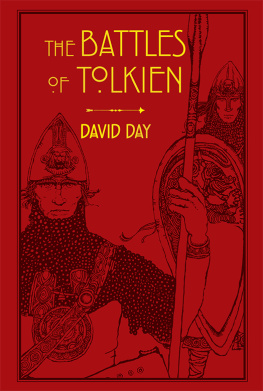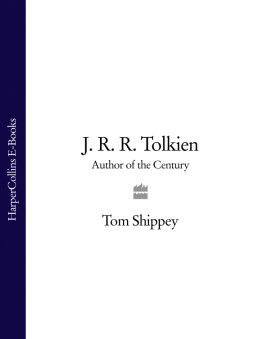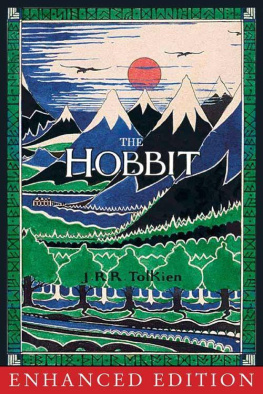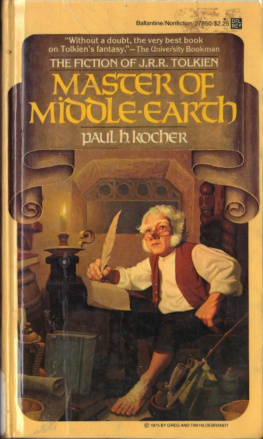
Contents
For Susan
Foreword to the Third Edition
It is generally agreed that the task of a compiler of reference works is a straightforward if laborious one. The information is there. All he has to do is locate, select, arrange and annotate it in a pleasing and coherent manner so that others, in search of the same information, may find it more quickly and conveniently than he did. But this agreeable picture presupposes that the body of information being referenced is itself fixed and finite, so that the task of referencing will have to be performed once only. If it expands only a little, the compilers labours may still serve their intended purpose; but if the expansion is considerable and especially when new data conflict with or at least sharply modify existing data the concordance as a whole will stand in need of revision, and the compiler must go back to work.
This has been the fate of The Tolkien Companion and its compiler, not once, but twice. The first revision took place only three years after first publication, and was not unexpected. The second revision this Third Edition had to wait a further twenty-three years, and when it happened was almost entirely unexpected; though perhaps it should not have been, since in the meantime the number of J. R. R. Tolkiens published works on the subject of Middle-earth had more than quadrupled, and the pressure to execute a second major overhaul of the Companion had been mounting steadily over the years. What had always inhibited the resolve to do so had been the very regularity with which new volumes continued to be published. The likely appearance of new data in the immediate future must always limit the value of any compilation.
When, in 1976, the original Tolkien Companion was published, the canon of Middle-earth consisted of two main works and two minor ones. The two main works were, in order of publication, The Hobbit (1937) and The lord of the Rings (195355). The minor works were The Adventures of Tom Bombadil (1961) and The Road Goes Ever On (1967). Of these incomparably the most important was The Lord of the Rings. Fourteen books about Middle-earth later this remains true. The events it details may have been seen by their creator as a form of finale to a story that had been going on for aeons, but for the vast majority of Tolkiens readers it has served as the principal gateway into his world. The Lord of the Rings is the Master Volume: the core of Middle-earth, and, needless to say, of the original Tolkien Companion.
Then, in 1978, The Silmarillion was published. Much was already known (or guessed) of this work. It represented Tolkiens personal gateway into Middle-earth, his own core. Conceived (in fine detail) long before The Lord of the Rings, it was senior to the latter in all ways except actual date of publication. His ideas for it had been evolving over a period of sixty years, and were by no means fixed: he had still been working on them when he died in 1973.
What had not been foreseen was the enormous complexity of The Silmarillion. No less than the history of the universe was laid before us. Stately themes unfolded, and undreamed-of wonders were revealed. Individuals that had been mere passing references in The Lord of the Rings now took on life and historical context. Whole peoples hitherto just names played their parts in the great drama of the First Age. Realms, mountains, rivers, forests and sea-coasts were named and described; and new maps were furnished. Altogether it was a massive addition to the existing body of information about Middle-earth, and to do it justice required 1,800 new entries for The New Tolkien Companion (1979).
If the many books by J. R. R. Tolkien published over the last twenty years that is, since The Silmarillion had individually contained even half as much new material as that work, compiling this Third Edition The Complete Tolkien Companion would have been a labour indeed. Fortunately, for my purposes anyway, they do not. But I cannot explain why without first expressing admiration for Christopher Tolkiens heroic long-term achievement in preparing for publication his fathers hitherto unpublished writings a very great feat of scholarship in its own right. A wonderful authors posthumous work has been handled with meticulous sensitivity by a wonderful editor; and, due entirely to him, since The Silmarillion no less than thirteen more books have been published: the twelve-volume History of Middle-earth series, and Unfinished Tales.
Yet, though anything but valueless to the Tolkien scholar, The History of Middle-earth proves to be of limited relevance to the compiler of Middle-earth reference works. The reason is that this series consists, in the main, either of earlier (rejected or superseded) versions of material already published as The Silmarillion and The Lord of the Rings, or of material dating from a very early time in the evolution of these myths before they had coalesced into the forms we recognise in later works. There are experiments in writing styles and different constructions of the legendarium. They are, in a phrase, earlier drafts, in which we learn (to cite two trivial examples) that for a long time Frodo was called Bingo, and that Strider was known as Trotter until a similarly late stage of The Lord of the Rings. It is fascinating material for those who wish to understand how these marvellous books came into being the actual authorial process as experienced by Tolkien but of minor relevance to a Companion that must confine itself to fixed facts about Middle-earth rather than earlier versions or abandoned byways of plot, riveting though these invariably are.
Then there is Unfinished Tales. First published in 1980, this volume is anything but irrelevant. It consists of a number of shorter tales, essays and (by the Editor) annotations, nearly all of which cast fascinating light on hitherto unilluminated regions of Tolkiens world. For example, the island-realm of Nmenor about which little had been recorded is now described geographically (with a map). The story of the heroic Nmenorean mariners, their epic voyages to Middle-earth and their growing friendship with Gil-galad of the Noldor is also told; but we learn also of their ruthless despoliation of the forests of Minhiriath in order to provide timber for shipbuilding. The disastrous battle of the Gladden Fields is described in harrowing detail; we stand beside Elendils tomb on the Hill of Awe and watch (in awe) while Cirion Steward of Gondor and Eorl the Young of the othod exchange vows of perpetual friendship and alliance. We listen with fascination as Gandalf ruefully describes the problems he encountered in persuading Thorin Oakenshield to accept Bilbo Baggins as part of his expedition; and the actual routes followed by the Black Riders in their hunt for the Ring are likewise detailed. We learn the names of the two missing Wizards, and at least one of the Nazgl; and much of the odd history of the Wild Men of Druadan Forest is made clearer than ever before. In short, Unfinished Tales is a major source-volume, not greatly less so than The Silmarillion, and much (though by no means all) of what differentiates The Complete Tolkien Companion from earlier Editions is derived from it.
Not, it may be added, without difficulty. Considerable and in some cases irreconcilable confusion is introduced in many places by earlier versions that are in fact later versions in other words post- Lord of the Rings or - Silmarillion revisions, of plot or (more often) spelling, that never found their way into the main texts, for reasons that vary widely. Worse, there are facts or at least intimations of facts that appear to collide sharply with information already in the canon and widely accepted as such. Even Tolkiens editor confesses that there is no part of the history of Middle-earth more full of problems than the story of Galadriel and Celeborn. He is quite right about Galadriel and Celeborn, but there are other examples nearly as perplexing.
Next page

